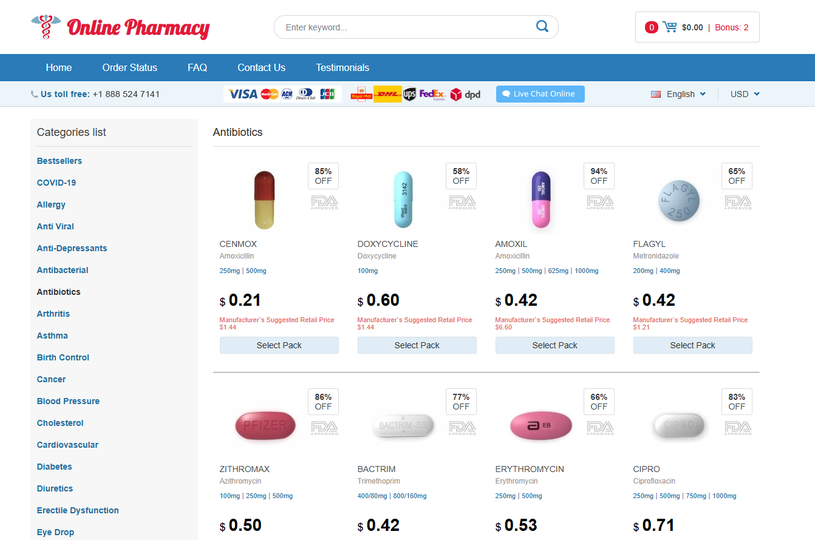To Order Furosemide US Online Visit Our Pharmacy ↓

However, along with its benefits, there are also risks involved in using this medication for hypertension.
It should not be stopped abruptly, but rather the dosage should be tapered off over a period of time. While furosemide may seem like a miraculous weight loss drug, it is important to note that it may not work for everyone. It is important to note that while these side effects may be concerning, they typically resolve on their own within a few days. This diuretic also has the potential to prevent the fluid buildup that can lead to hospitalizations for heart failure. Furosemide, commonly known as a diuretic, is often misunderstood in terms of its true effects. It is essential to be aware of common side effects to ensure that you are not putting yourself at risk of further complications from medication. Patients with kidney disease or liver disease may be at increased risk of side effects and may require special monitoring during treatment.
The Science Behind Furosemide for Weight Loss
However, it has been rumored to aid in weight loss due to its ability to eliminate excess water weight. Some athletes may use furosemide to quickly reduce water retention and achieve a desired weight category in sports that require specific weight classes, such as boxing or wrestling. Another study found that a combination of Furosemide and spironolactone improved exercise capacity and reduced symptoms of heart failure compared to Furosemide alone. For example, someone with heart failure may benefit from taking both Furosemide and spironolactone. This excess fluid can lead to symptoms such as edema, shortness of breath, and hypertension. Using Furosemide Safely: Dos and Don'ts: Furosemide should be taken as directed by the doctor or healthcare professional. By regulating the body's fluid balance, furosemide has proven to be effective in managing fluid retention, reducing edema, and aiding in the treatment of congestive heart failure and kidney disease.
Dosage Guide for Using Furosemide Safely.
This diuretic action helps to lower blood pressure, reduce edema, and alleviate symptoms associated with conditions such as congestive heart failure, renal impairment, and liver disease. Furosemide is a medication that is commonly used to treat fluid retention problems in the body. Additionally, we will also discuss the potential side effects of Furosemide, so you know exactly what to expect before taking this medication. Furosemide is sold under the brand name Lasix and has been used for over 50 years in the medical field. However, the science behind furosemide's weight loss effects is not widely known. While it can be an effective weight loss solution, there are possible side effects that users should be aware of. It is crucial to drink plenty of fluids to prevent dehydration and eat a balanced diet rich in minerals.
Importance of Compliance
Due to this, it can put significant stress on the kidneys which can worsen kidney function or even result in kidney damage. Furosemide, commonly referred to as Lasix, is a diuretic medication that is often used to help treat fluid buildup in the body caused by heart disease, liver disease, or kidney disease. Additionally, furosemide can interact with other medications, so it's important to inform your healthcare provider of all medicines you are taking. But how exactly does it promote weight loss? And what are the things you need to consider before you try it yourself? In this article, we'll explore the science behind furosemide as a weight loss pill and discuss its potential benefits and drawbacks. Here are some of the most common side effects and precautions to be aware of:. The drug works by inhibiting sodium reabsorption in the loop of Henle, which promotes the excretion of water and electrolytes. Other diuretics such as hydrochlorothiazide, spironolactone, and chlorthalidone may be used for similar conditions, but they may have different mechanisms of action and side effect profiles.
Potential Side Effects to Consider
However, like most medications, furosemide is not without potential side effects which can include electrolyte imbalances, low blood pressure, and kidney damage. Typically, furosemide is taken once daily, either with or without food. It's recommended to take furosemide at the same time every day to maintain balance in your body's fluid levels. This mechanism of action helps alleviate the symptoms of fluid retention often experienced by heart failure patients, such as swollen ankles and shortness of breath.One significant benefit of furosemide is its ability to improve exercise tolerance and overall quality of life in heart failure patients. On the other hand, furosemide is a fast-acting drug that can quickly lower high blood pressure in patients with hypertension. It falls under the loop diuretics class of drugs and works by inhibiting the reabsorption of sodium, chloride and water in the kidney tubules. Understanding Fluid Overload: Fluid overload refers to a condition where there is an excessive amount of fluid or water in the body.
The use of Furosemide in treating Hypertension has its share of both advantages and drawbacks, and it's necessary to evaluate them thoroughly
Importantly, patients must communicate with their healthcare provider to ensure they are making informed decisions and taking the medications correctly. Furosemide is a powerful medication that is commonly used to treat fluid buildup in the body, also known as edema, as well as hypertension. It works by increasing the amount of urine produced by the kidneys, thus reducing the amount of fluid in the body. Furosemide, also known as Lasix, has become a popular weight loss solution due to its diuretic properties. While furosemide can be an effective diuretic option for some patients, it is important to be aware of its potential pitfalls and to work closely with a healthcare provider to manage any associated risks. However, do not take it close to bedtime, as it may cause you to wake up to urinate frequently. This leads to lower blood pressure, but it does not address the root cause of hypertension.
In some cases, it can lead to dehydration, worsening of kidney function, and electrolyte imbalances
Patients have lauded the drug for its ability to alleviate fluid retention, reducing swelling and bloating. Benefits and Potential Side Effects: Furosemide is a powerful diuretic medication that has been used for decades to treat a range of medical conditions. The benefits of Furosemide are undeniable, but only a doctor can determine if its use outweighs its potential side effects. For individuals with congestive heart failure, furosemide can be a critical component of their treatment plan, helping them manage fluid retention and improve overall cardiovascular function. Rapid weight loss can lead to dehydration, as well as electrolyte imbalances that can increase the risk of complications like kidney damage and even heart attack. Collaborating with healthcare professionals helps ensure the development of an individualized treatment plan that maximizes the benefits of furosemide or alternative diuretics while minimizing potential side effects. With the right medication and careful monitoring, your pet can experience relief from symptoms associated with fluid buildup and reclaim his quality of life.
One of the benefits of using furosemide in the long-term is that it can help to control the symptoms of heart failure by reducing the amount of fluid in the body
Furosemide works by increasing urine output and decreasing fluid retention, thus reducing swelling and lowering blood pressure. While Furosemide is known for its fast-acting and potent diuretic effects, alternative options may be preferred in certain situations. Both acupuncture and massage are safe and non-invasive treatments that can be used in conjunction with other natural alternatives to Furosemide. Benefits of Long-term Use: Long-term use of furosemide has been shown to be effective for managing conditions such as heart failure, hypertension, and edema. In this article, we will explore how furosemide helps heart failure patients and its potential benefits and drawbacks. With proper use and monitoring by a healthcare provider, furosemide can be an effective tool for managing symptoms and promoting overall well-being. It also aids in lowering blood pressure and alleviating edema, leading to enhanced breathing and reduced fatigue.Studies have shown that furosemide is effective in reducing hospitalizations and mortality rates among heart failure patients.
Benefits of combining Furosemide with other heart failure medications: Furosemide is often used as a diuretic medication to help manage heart failure by removing excess fluid build-up in the body
In some cases, furosemide may not be appropriate or may need to be used in combination with other medications. Cats usually receive a lower dosage, about 0.5-1 mg per pound of body weight. Furosemide is a potent diuretic that has been extensively studied and proven to be effective in treating a variety of conditions. We will also explore how Furosemide interacts with other medications, including over-the-counter drugs and supplements. Another potential drawback of using furosemide as a long-term treatment for heart failure is the development of drug resistance. It works by blocking the sodium-potassium-chloride co-transporter in the ascending limb of the loop of Henle. It acts on the ascending limb of the loop of Henle, where it blocks the Na+/K+/2Cl- co-transporter.
In addition, some patients may experience low blood pressure, increased urination, and rash
It's important to follow these instructions and monitor for any side effects. Ultimately, the decision to use furosemide for hypertension should be made in consultation with a doctor who can help you weigh the potential benefits and risks. Furosemide is a medication commonly used to treat edema, hypertension, and other conditions by increasing urine production and reducing fluid retention in the body. It is important to administer furosemide at the correct dosage and frequency as prescribed by a healthcare provider to ensure its effectiveness. Additionally, some believe that diuretics are only used for weight loss purposes. This article will provide a comprehensive guide to using furosemide for weight loss, including how it works, potential side effects, and factors to consider when determining if this method is right for you. While furosemide does increase urine output, it does not directly cause dehydration.





